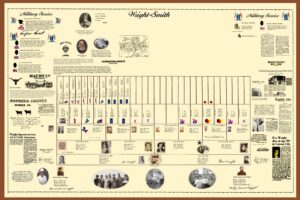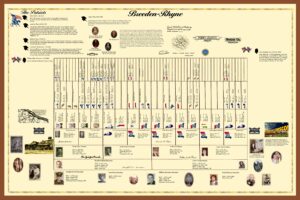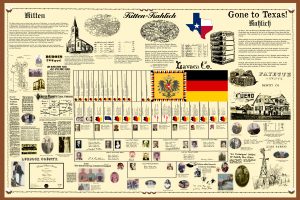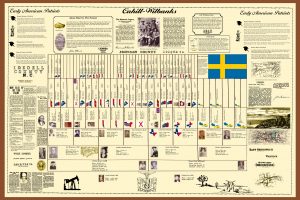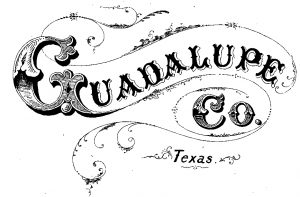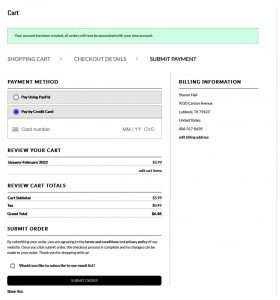Researching and Publishing a “Parade of States”
 I’ve recently embarked on a bit of an adventure — a quest to research and publish a series of Digging History Magazine issues which focus on each American state — highlighting the history and how and where to find the best records for historical and genealogical research. I’m not selecting them in any particular order.
I’ve recently embarked on a bit of an adventure — a quest to research and publish a series of Digging History Magazine issues which focus on each American state — highlighting the history and how and where to find the best records for historical and genealogical research. I’m not selecting them in any particular order.
In fact, prior to the last few issues, I had previously published a number of issues which focused (mostly) on an entire state: Oklahoma (September 2018); Colorado (May-June 2019); Kansas (July-August 2019); New Mexico-Part I (July-August 2020) and New Mexico – Part II (September-October 2020). After concentrating on series such as the “Roaring Twenties”, the “Fabulous Fifties” and the “Dirty Thirties” (Great Depression years), I’ve decided to devote quite a few upcoming issues (not necessarily consecutive) to what I call a “Parade of States”. Occasionally, I may publish a themed issue since I have several ideas percolating on the “back burner” as well.
I began this series with a focus on the great state of Wyoming, a place I’ve been fascinated with for quite some time and a place I didn’t know a whole lot about history-wise. Then I followed it up with a two part-series on Massachusetts: (September-October 2024) and (November-December 2024). I began 2025 with an issue focusing on Rhode Island and Connecticut, both with roots in early Massachusetts settlements and expansion. Up next — New Jersey!
These are available by single issue purchase, OR if you purchase an Annual Subscription, I’ll give you FOUR issues of your choice from the states collection (including the earlier publications).
Have questions? Drop me an email and I’ll be happy to help: mailto: [email protected]
It’s Been Awhile . . . . Here’s what I’ve been up to. . .
It’s been quite some time since I posted on the blog. These days I’m consumed with writing, researching and publishing Digging History Magazine, along with taking care of my mom (among other things). The last three weeks were an interlude of sorts — a very busy one — as I was able to bang out not one or two, but SEVEN draft family history charts for clients (and one for a subscriber who won a promotional giveaway). Click each image to enlarge and get a better look.
For me it was a lot of work, but I loved every minute of it! When I create these custom-designed family history charts, I treat each one as if it were my own and do my best to use not only the research my clients have gathered, but I continue digging around until I find something interesting they’ve never uncovered. Such was the case for all these charts.
Digging History Magazine Volume 2023: Issue 1 is Out!
 I’m a bit late posting this, but the first issue of 2023 is out and begins the year with an extended (two-part) series on the “Roaring Twenties”. I originally planned to focus solely on the years 1920-1929, but after discovering how volatile the period of time between the end of World War I and the beginning of a new decade were, I decided to start out with an extensive look at 1919. I hope you find it as informative and interesting as I did.
I’m a bit late posting this, but the first issue of 2023 is out and begins the year with an extended (two-part) series on the “Roaring Twenties”. I originally planned to focus solely on the years 1920-1929, but after discovering how volatile the period of time between the end of World War I and the beginning of a new decade were, I decided to start out with an extensive look at 1919. I hope you find it as informative and interesting as I did.
Again, in honor of the magazine’s fifth anniversary I have spliced in some articles from the archives.
● Before the “Roar”
* The Great Molasses Flood of 1919
* Hell for Rent: A Nation Goes Dry
* The Great Red Scare
* Anarchy!
* Red Summer
● The Decade That Changed America: Part One – A Return to Normalcy?
● Family History Toolbox
● May I Recommend
● The Dash: Carbon Petroleum Dubbs (1881-1962)
Enjoy the issue! I am looking forward to the next issue – Part Two of “The Roaring Twenties” series featuring articles like: Fads, Flappers and Feminism; Bootleggers, Cow Shoes and Tommy Guns; Mining Genealogical Gold: Finding Records of the “Roaring Twenties” (and the stories behind them) and more!
This issue is for sale here by single issue, or by signing up for a magazine subscription here. New subscribers automatically get entered into an ongoing Special Promotion (a custom-designed family history chart, worth up to $350!). Details here. And, all subscribers get an extra 5% off all services (including charts) this year (2023)!
RootsTech 2023 Conference Specials and Giveaways
 It’s that time of the year when genealogists around the world either gather in Salt Lake City or online to hear awesome presentations and check out all the new goodies at RootsTech. This year Digging History decided to purchase a virtual booth.
It’s that time of the year when genealogists around the world either gather in Salt Lake City or online to hear awesome presentations and check out all the new goodies at RootsTech. This year Digging History decided to purchase a virtual booth.
There are a number of virtual exhibitors, but I heard not many of them are doing giveaways. However, Digging History has some awesome giveaways — and it’s open to everyone, even if you’re not attending RootsTech. You have until March 10 to enter either the general giveaway (giving away two 2-hour gift certificates for any service Digging History offers, worth $70) or the GRAND PRIZE — a custom-designed family history chart worth up to $350! Details about how to enter here:
https://digging-history.com/rootstech-2023/
Questions? Email me: [email protected]
Custom-Designed Family History Charts: FAQs
Last year I wrote a couple of blog articles about pricing for my custom-designed family history charts:
- Preserving Family History: Pricing for Custom-Designed Family History Charts
- Family History: How Much is it Worth to Preserve it?
The purpose of this article is to point out a few things about how the process works and how you don’t have to wait until you’ve found all your ancestors back to Adam (just kidding!).
What is the chart size?
The charts I create are more often than not 36 x 24 for which I can fit up to 8 (or 9) generations. Usually that means 6 generations in the “boxed” area of the chart which, if beginning with yourself, includes through third great-grandparents. The additional generations (children, grandchildren, perhaps great-grandchildren) are included at the bottom the chart, outside the boxed area).
Are there other sizes?
I have also done smaller charts (20×30 or 16×24), depending on how many generations are included in the boxed area. Each project is unique and the final size will reflect the number of generations and the items you want to include on the chart.
Ancestors of Note
Clients often want to highlight their ancestors of note. For instance, I have clients whose ancestor signed the Declaration of Independence or was a passenger on the Mayflower. Those ancestors are distant great-grandparents. However, there’s plenty of room to highlight those family history facts around the perimeter of the boxed area.
What other items can I include?
There is plenty of room in the boxed area for a picture of your ancestor. If you don’t have one, an image called a “flag map” is inserted to represent the state (or nation) where they were born. This makes for a colorful chart! Included for each ancestor in the boxed area is their birth and death dates, as well as signatures.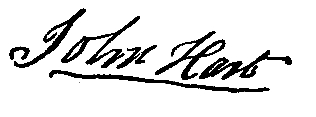 The items placed around the box perimeter might include news clippings, short patriot bios (Revolutionary War, War of 1812, Civil War, World War I and II, etc.). When I can locate them, I like to lift county names off old maps to show where my client’s ancestors owned land.
The items placed around the box perimeter might include news clippings, short patriot bios (Revolutionary War, War of 1812, Civil War, World War I and II, etc.). When I can locate them, I like to lift county names off old maps to show where my client’s ancestors owned land.
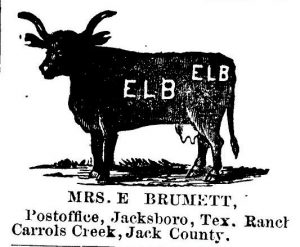 Cattle brands, if they can be found, make great items to display.
Cattle brands, if they can be found, make great items to display.
The purpose of selecting these types of historical items is to make each one conversation-worthy — a way to get your family interested in their history. What a client selects for their chart is obviously unique to their own family’s history.
Depicti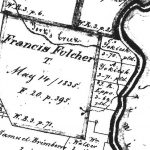 on of an ancestor’s land is a great conversation starter. For instance this client’s ancestor (Francis Fulcher) was an early Texan. What kind of challenges must he and his family have faced in the early days of Texas?
on of an ancestor’s land is a great conversation starter. For instance this client’s ancestor (Francis Fulcher) was an early Texan. What kind of challenges must he and his family have faced in the early days of Texas?
What about brick walls?
For genealogists “brick walls” are a fact of life. Many of us have searched diligently for years on end to fill as many gaps in our tree as possible. However, there are some ancestors who left little in the way of a paper trail. Most charts that I have created have blank boxes, and I might add that most clients, even after having their chart designed, are still actively researching their family history.
What if you eventually find that elusive ancestor, or want to add something else to your chart? I currently use Walgreens Photo for printing charts up to 36 x 24. They run specials every week, sometimes up to 50% off which means the larger charts cost less than $20 to print, so reprinting is not cost-prohibitive.
I’m on a tight budget
As are we all! I offer a number of ways to pay for all my services, charts included. If you only have so much to spend per month, then a recurring payment can be set up. For instance, $25 purchases one hour of chart work.
For Digging History Magazine subscribers, the rate drops to $20 per hour (20% off all services for subscribers). If you want to package a certain number of hours per month that can be customized to fit your budget. I’m very flexible!
These are just a few questions you might have. If you have more questions or you’re ready to get started with a custom-designed family history chart, don’t hesitate to contact me at [email protected]. Other chart samples here: https://digging-history.com/charts/.
Digging History Magazine – Volume 2022: Issue 4 is Out!
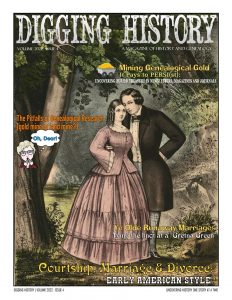 The fourth issue of 2022 was inspired by a recent book I read: The Divorce Colony: How Women Revolutionized Marriage and Found Freedom on the American Frontier. In this issue you will find the following feature articles:
The fourth issue of 2022 was inspired by a recent book I read: The Divorce Colony: How Women Revolutionized Marriage and Found Freedom on the American Frontier. In this issue you will find the following feature articles:
● Courtship, Marriage and Divorce: Early American Style. This lead article covers early American customs and laws (seventeenth and eighteenth century) regarding courtship, marriage and divorce, including those of the Puritan, Anglican and Quaker faiths.
● Ye Olde Runaway Marriage: Tying the Knot at a “Gretna Green”. Have you ever experienced difficulty locating a marriage record for an ancestor? Do you sometimes wonder if they ever married? Might they have married somewhere unexpected, away from their hometown, a place sometimes referred to as a “Gretna Green”? It’s a fascinating history.
● Mining Genealogical Gold: It pays to PERSI(st) – uncovering buried treasure in newsletters, magazines and journals. If you’ve never used this special genealogical resource, you’re in for a treat. Numerous examples of using this valuable resource to potentially uncover stories about your ancestors.
● (Oh, Dear!) The Pitfalls of Genealogical Research (gold mine or land mine?). If you’ve been researching family history for awhile, it’s possible you have come across unexpected – or perhaps even shocking – information about one or more of your ancestors. How should we respond? Do we freely share the information or hide it away? Of course, our response may depend on what we uncovered.
● The Dash: Virgil Edwin Earp (1879-1959). A detailed look at the famous (or infamous) Earp family. Subtitled: “The $64,000 Question: Did Virgil Earp (Wyatt’s Nephew) Get the Answers Ahead of time and Was He Really Born in Tombstone?”
Enjoy the issue! I am looking forward to the next issue, featuring a topic I’ve wanted to cover for some time – “Ways to Go in Days of Old”. 2022 will wrap up with an issue featuring the Korean War and finding records of our ancestors who served.
This issue is on sale in the magazine store: https://digging-history.com/store/?model_number=julaug-2022 or available when you purchase a subscription (three options): https://digging-history.com/digging-history-magazine-subscription/
Subscribers received 20% off all services at Digging History, including custom-designed family history charts: https://digging-history.com/charts/ For more information, contact me: [email protected].
Sharon Hall, Publisher and Editor
Navigating the Digging History Magazine Store
 The Digging History web site is designed to provide information about our services and to post occasional blog articles. However, the primary focus is selling subscriptions to Digging History Magazine or purchasing single issues and other digital products. Most importantly: You MUST create an account (see details below) in order to access your purchase. Here are some tips for making a purchase in the magazine store:
The Digging History web site is designed to provide information about our services and to post occasional blog articles. However, the primary focus is selling subscriptions to Digging History Magazine or purchasing single issues and other digital products. Most importantly: You MUST create an account (see details below) in order to access your purchase. Here are some tips for making a purchase in the magazine store:
When you add a subscription or any other product (magazine issue, individual article, etc.) you will be able to go to the cart and see its contents, how much you will be charged (including sales tax if applicable). Click “Checkout” and you will be asked to provide some information to create an account. Why do you need to provide this information?
- Because we sell subscriptions and digital downloads (e.g., single magazine issues, special editions and individual articles) our cart software requires that you MUST create an account when making a purchase.
- Your address is required because Digging History is located in Texas and Texas residents are required to pay sales tax (all other states = no sales tax). Your address will tell the payment processor whether to charge sales tax (Click the image below to enlarge).
- Provide all required information, including creation of a password (and re-typing it). Press “Continue to Payment” and then you will have the option to pay either by PayPal or Credit Card (Click image below to enlarge).
- Select your preferred payment method. If selecting PayPal you will be re-directed to log into your PayPal account where you will select your payment method. If paying via credit card, provide the requested information (number, expiration date, etc.).
- Review your cart one more time and if satisfactory, press “Submit Order”.
Check your email and momentarily you will receive a receipt for your purchase. Your purchase should be attached to the receipt, If not, please contact me at [email protected] with information as to what you purchased and I’ll be happy to forward you a copy as soon as possible. If you have any questions about making a purchase or require assistance, don’t hesitate to contact me at the email address above.
The $64,000 Question: Did Virgil Earp (Wyatt’s Nephew) Get the Answers Ahead of Time and Was He Really Born in Tombstone?
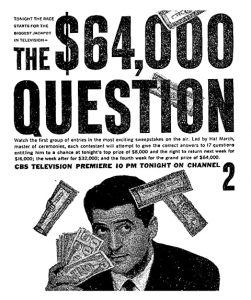 This may seem like an odd topic, but I couldn’t help but wonder after a YouTube video popped up in my feed, entitled “Wyatt Earp’s Nephew, Virgil Earp (Born in 1879), Talks About the Wild West“. There are two reasons why this is of interest to me. I just finished a two-part magazine series on the 1950s (in honor of the 1950 census release in April of this year). In the last issue I wrote extensively about one particular aspect of that far-reaching (and “fabulous”) decade: “Prime Time & Misdemeanors: The Rise and Fall of Television’s First Golden Age”.
This may seem like an odd topic, but I couldn’t help but wonder after a YouTube video popped up in my feed, entitled “Wyatt Earp’s Nephew, Virgil Earp (Born in 1879), Talks About the Wild West“. There are two reasons why this is of interest to me. I just finished a two-part magazine series on the 1950s (in honor of the 1950 census release in April of this year). In the last issue I wrote extensively about one particular aspect of that far-reaching (and “fabulous”) decade: “Prime Time & Misdemeanors: The Rise and Fall of Television’s First Golden Age”.
The late 1940s through the late 1950s have been referred to as the first “Golden Age of Television”, a time when the airwaves were awash in a sea of game and quiz shows which aired morning, noon and night. Unlike radio, which had long provided audio entertainment to the masses, television was an audiovisual format – a way to not only hear, but see live events. Some shows, like College Bowl, Who Said That, Truth of Consequences and Queen for a Day, had been radio shows which later moved to television (or for a time aired on both formats).
The height of quiz show-mania occurred between 1955 and 1958, dominating the airwaves with shows like The $64,000 Question, The $64,000 Challenge, Dotto and Twenty-One, all of which offered the chance to win hundreds of dollars by answering “general knowledge” questions. However, the main purpose of these “get-rich-quick” shows was to enrich the network and show sponsors like Geritol, Colgate-Palmolive and Revlon. Revlon made a boat-load sponsoring The $64,000 Question — to the tune of a $64 million increase in sales — by the time the show (and others with similar formats) were cancelled by late 1958.
However, in early 1958 Virgil Edwin Earp, the son of Newton Jasper Earp (Wyatt’s half-brother), appeared on The $64,000 Question and his category was (surprise, surprise!) the Wild West. The episode which popped up on YouTube was the chance to double his previous winnings of $16,000 (to $32,000). Virgil was asked three multi-part questions related to the “Wild West” and he answered every one correctly and scheduled to appear again the following week where he would have the chance to win $64,000. It appears, however, that Virgil Earp, a self-proclaimed gambler, decided not to proceed to the next level, ending his streak at $32,000 in winnings.
In 1958 Virgil Earp was 79 years old and the last Earp of any fame. His father Newton and all his half-siblings (James, Virgil, Wyatt, Morgan, Warren and Adelia) had all passed on. It just so happens this particular Earp is related to me through my maternal grandmother (Okle Emma (Erp) Young). Even though my grandmother’s family (and a generation or two before her) changed the spelling of their name to “Erp” vs. “Earp”, we are related. According to Marc McDermott’s “Cousin Calculator” I (and all my first cousins on the Young side of the family) are related to Wyatt and his siblings, including Newton, as fourth cousins, three times removed. That would make Virgil Edwin Earp a fifth cousin, twice removed, and the ancestor we all share is Joshua Joseph Earp (1706-1771).
Not only did Virgil win $32,000, but he made a name for himself by regaling viewers and the studio audience with tales from the Old West. Mind you, the Earp family was still making headlines in the 1950s. Newspapers around the nation would, from time to time, feature articles about their legendary (factual and fictitious) escapades as lawmen and gunslingers. Before exploring answers to the two questions – did Virgil get the answers ahead of the show and was he really born in Tombstone – some Earp history is in order. . . .
The rest of what will be an extensive article on the Earps and the answer to these two questions will appear in the next issue of Digging History Magazine in “The Dash” column. Some of the stories will be familiar, but at least one incident involving Wyatt Earp is one which very few biographers mention. If you’d like to read the article (and the entire issue — see what’s brewing here), email me and I’ll send you a special link to purchase the upcoming issue for $3.99 ($2 off regular price) — [email protected].
Currently Brewing: Digging History Magazine (Volume 2022: Issue 4)
 Having spent two or three weeks working on genealogical research projects and a special chart project, I’m back to researching/writing/editing the next issue of Digging History Magazine. The issue will be out in early September and will feature a number of topics which I’ve had on the back burner for awhile:
Having spent two or three weeks working on genealogical research projects and a special chart project, I’m back to researching/writing/editing the next issue of Digging History Magazine. The issue will be out in early September and will feature a number of topics which I’ve had on the back burner for awhile:
- Courtship, Marriage and Divorce: Early American Style – a look at courtship, marriage and divorce in early America — customs, laws, finding records and more.
- Ye Olde Runaway Marriages: Tying the Knot at a “Gretna Green” – Have you ever found it difficult to locate an ancestor’s marriage record? Perhaps they didn’t wed in the county where they lived. Maybe the couple, like my own great grandparents, traveled to a distant county where the marriage laws were a bit more lax, or where no one knew them (my great grandfather was 19 and my great grandmother was only 13). A fascinating history and lots of stories!
- Mining Genealogical Gold: It Pays to PERSI(st): uncovering buried treasure in newsletters, magazines and journals – A look at one of the research tools many family history researchers may never have heard of. The Periodical Source Index (PERSI) is maintained by the staff of the Genealogy Center of the Allen County Public Library (Ohio). According to their web site PERSI is the premier subject index for genealogy and local history periodicals, consisting of more than 3 million citations to readily-available periodical sources. The articl
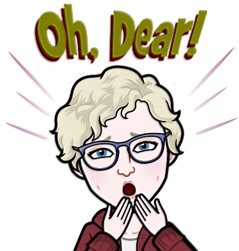 e will feature techniques, tips and examples of stories to be uncovered.
e will feature techniques, tips and examples of stories to be uncovered. - Oh, Dear! The Pitfalls of Genealogical Research (gold mine or land mine)? This particular article covers the “Oh, Dear!” moments most genealogists have come across in their research. These days many people are uncovering devastating family secrets through DNA testing, but in early America you might find references to ancestors accused of witchcraft or even incest. When we come across these shocking facts, how should we respond?
- The Dash: Virgil Edwin Earp (1879-1959) – The premise of this article was formed when a YouTube video appeared in my feed. Wyatt Earp’s nephew was appearing on the wildly popular 1950s quiz show, The $64,000 Question. He was also regaling viewers with tales from the Old West (his category was the “Wild West”). Had he really killed a man at the age of 18? Was he really born in storied Tombstone? Given the scandals surrounding the show (and others), did Virgil get the answers ahead of time (he won $32,000). It will be a fascinating article about not only Virgil’s life and quiz show appearance, but a great deal of Earp family history (I am related to this family through my maternal grandmother who was an Erp/Earp).
It will be a great issue, filled with stories, tips, book reviews and more! Look for it in the magazine store in early September. Or consider a subscription and never miss an issue!
It’s Been Awhile (Time Flies)
 It’s been a busy year which means I have found myself “behind schedule” a LOT, blog posts included. So, here’s a synopsis of what I’ve been up to, especially writing-wise. Given my busy schedule, my new motto is “Better Late Than Half-Baked”.
It’s been a busy year which means I have found myself “behind schedule” a LOT, blog posts included. So, here’s a synopsis of what I’ve been up to, especially writing-wise. Given my busy schedule, my new motto is “Better Late Than Half-Baked”.
I started off 2021 with what I thought would begin perhaps a two-issue series entitled, “From Whence We Came: Appalachia”. Little did I know what was in store. It was an ambitious project and, as it turns out, couldn’t be accomplished in two issues. I just finished the FOURTH (and final!) issue of this interesting and informative series. Here’s a synopsis of each issue’s highlights and a link to purchase or subscribe:
- Part 1: This issue featured a cover depicting Daniel Boone leading settlers over the Cumberland Gap into Kentucky. This issue featured a “Mining Genealogical Gold” column which highlighted the history and resources for finding ancestors who settled in the Appalachian regions of Kentucky, Tennessee, North and South Carolina. “Hurrah for the Ladies: The Confederate Women of East Tennessee” was a fascinating article to research and write. East Tennessee was a unique place to be during the Civil War — more voted against secession than voting for it, and after the Union Army took over early in the war, it made for an interesting way of life for “the other side”, in particular the Confederate-sympathizing women. The issue included book reviews and a fascinating “Family History Toolbox”. The issue wrapped up with a genealogical mystery — just how old was John Shell. Everyone knew when he died, but when exactly was he born? January-February 2021 issue available here.
- Part 2: This issue featured a “Mining Genealogical Gold” column which highlighted the history and resources for finding ancestors who settled in the Appalachian region of Virginia and West Virginia (which lies entirely in Appalachia). Also included were a couple of articles which featured a bit of Kentucky history — one from the early twentieth century (“Moonlight School: Teaching ABC’s to Mountain Moonshiners”) and another from the Depression area (“Book Lady, we’ve been waiting for you!”). I have been wanting to write an article on the so-called Melungeons for some time and I finally got around to it — “Melungeons: a very strange people (who made moonshine whiskey)”. A great story about a much maligned and misunderstood people. March-April 2021 issue available here.
- Part 3: This issue featured a “Mining Genealogical Gold” column which highlighted the history and resources for finding ancestors who settled in the Appalachian region of Georgia and Alabama. This one was of particular interest to me since I have ancestors who settled in this part of Alabama. This issue also featured yet another article I’ve been meaning to write for some time. This one, set in the Depression era, is entitled “Moving Mattie”. It’s the story of one woman’s defiance when Franklin Roosevelt and one of his many “alphabet soup” agencies decided to flood the land she and and family lived on. After coming across the records documenting her scrap with the government some time ago, I knew I had to write about Mattie Randolph’s plight. May-June 2021 issue available here.
- Part 4 (The End!): This issue was a wrap-up of the series and featured three extensive articles which I wasn’t able to squeeze in earlier. Another “Appalachian Way” article features everything from folk medicine, folk magic and granny witches to snake handlers and child brides. A second article — “Appalachian Feuds (between people not named Hatfield or McCoy)” — features two long and bloody Kentucky feuds. An article entitled “Oh, The Stories I Find!” features what I call a “December-May” marriage which began making headlines in 1946. What a character was Mattie Lyons Large Sprouse! July-August 2021 issue available here.
I have a special offer with these four extensive Appalachian issues. Subscribe before the next issue comes out (October 31) and you’ll get all four issues. Subscription options are available to fit any budget: https://digging-history.com/digging-history-magazine-subscription/. Need help subscribing? Contact me for assistance: [email protected].
Looking Ahead
The next two issues are shaping up. The September-October issue will be another “Un-Shelved” issue, similar to a couple of 2020 issues when I featured a number of articles that were previously “shelved” because I couldn’t squeeze them in (or I was too far behind schedule!). Plans are to include an article from last year’s two-issue New Mexico series, entitled “Tales From the Bootheel and Beyond: The Ghost Towns and Storied History of Southwestern New Mexico”. An “OK, I Give Up… what is it?” column will feature some obsolete terminology I’ve come across in researching family history. Should be a fascinating article!
The last issue of 2021 will be an ambitious one covering what became known as “Manifest Destiny”, a phrase coined by John O’Sullivan and executed by President James K. Polk (and beyond). Some historians view it as a way for 1840s-era Democrats to justify the Mexican-American War. That war was in fact central to the whole concept of Manifest Destiny and this issue will also feature an article about finding resources for Mexican-American War ancestors.
All of which means I will be busy from now until the end of the year with not only writing but genealogical research for clients. Say a prayer for me!
Sharon Hall, Publisher & Editor, Digging History Magazine


